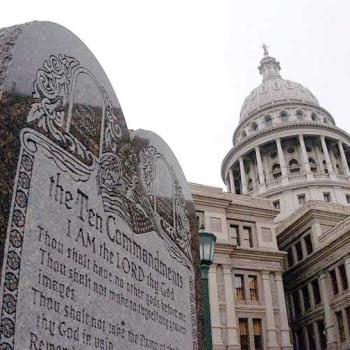Hallowe’en, at least as it’s observed in North America, is a thoroughly Irish-American holiday. You may know that Hallowe’en began as the Irish Samhain (pronounced “SOW-wen”) observance, thought to be the day in which the veil between the living and the dead is at it thinnest. From pagan times the Irish lit bonfires and wore disguises during Samhain to keep away ghosts. In an attempt to co-opt the holiday to make it Christian, the Catholic Church designated the two days after Samhain to be All Saints Day and All Soul’s Day. And thus Samhain became All Hallow’s Eve, or Hallowe’en.
Irish who came to North America during the Colonial period continuing to observe Samhain/Hallowe’en. But I learned only recently that Hallowe’en became a big American holiday observed by just about everybody because of the Irish Famine of 1845-1852, also remembeered as The Hunger. It’s estimated that nearly two million Irish emigrated to the United States within a ten-year period because of The Hunger. This was about a quarter of the population of Ireland. And in the decades after that Hallowe’en customs began to spread way beyond Irish communities. So it was that by the early 20th century American families everywhere were carving jack-o’-lanterns from pumpkins, and children were going trick-or-treating on Hallowe’en night.
In both cases, these are American adaptations of Irish customs. Let’s take a look.
Irish-American Hallowe’en: Jack-o’-Lanterns
In Ireland, it was common to carve ghoulish faces on turnips or other large vegetables during Samhain to frighten the ghosts. Pumpkins are native to North America and wouldn’t have been available in Ireland way back when. But of course as soon as Irish people came to America and got their hands on big, round, magnificent pumpkins, who wants to carve turnips? The carved pumpkin jack-o’-lantern is very much an American adaptation.
The earliest known image of a pumpkin jack-o’-lantern appeared in an 1867 issue of Harper’s Weekly, published in New York. Pumpkin jack-o’-lanterns were referenced in a couple of Nathaniel Hawthorne‘s short stories even earlier than that. They also came to be associated with Washington Irving’s Headless Horseman from “The Legend of Sleepy Hollow,” first published in 1820. In the story’s climax the Horseman hurls his severed head at Ichabod Crane, knocking Crane off his horse. The next day people find Crane’s grazing horse with a shattered pumpkin nearby, but Crane himself is never seen again. It’s implied the Horseman was a trickster, and the “head” had been a pumpkin all along. Irving didn’t write that the pumpkin was carved, but over the years illustrators and filmmakers couldn’t resist making the pumpkin into a jack-o’-lantern. See also “The twisted transatlantic tale of American jack-o’-lanterns” by Blane Bachelor at National Geographic, October 27, 2020.
The name “jack-o’-lantern” is from Irish folklore. There was a man named Stingy Jack, the story goes, who was brilliant at cheating the Devil. He somehow persuaded the Devil to turn himself into a coin, and then Jack kept the coin in his pocket with a silver cross so the Devil coulnd’t get out. On another occasion he tricked the Devil into climbing a tree, and then Jack carved a cross on the tree so the Devil couldn’t climb down. Jack released the Devil after the Devil promised not to take Jack’s soul to Hell. But when Jack died he found he wasn’t allowed into Heaven, either. The ghost of Jack has wandered the world ever since, carrying a burning coal inside a carved-out turnip to light his way. Thus he was “Jack of the lantern,” or “Jack o’ Lantern” for short.

Irish-American Hallowe’en: Trick or Treating
Trick or Treating was adapted from two older customs called souling and guising. In the Middle Ages it was common in Ireland and Scotland for poor people to go to wealthier homes on All Soul’s Day and offer to pray for their dead. For this they would receive a pastry called a “soul cake.” This was called souling. Guising may have developed from souling. In guising, people — usually younger people — dressed in costumes and went from house to house. Instead of offering to pray for the dead they would sing a song, recite a poem, or perhaps do a “trick” in exchange for a treat of fruit, nuts, or coins.
Irish and Scottish communities in the U.S. continued the custom of souling and guising, and in the early 20th century these customs began to spread and became the Trick or Treating of Hallowe’en. By the 1930s Trick or Treating became a semi-organized activity in many American communities with costumed children going from house to house to collect sweets. See How Trick-or-Treating Became a Hallowe’en Tradition at The History Channel for more.













